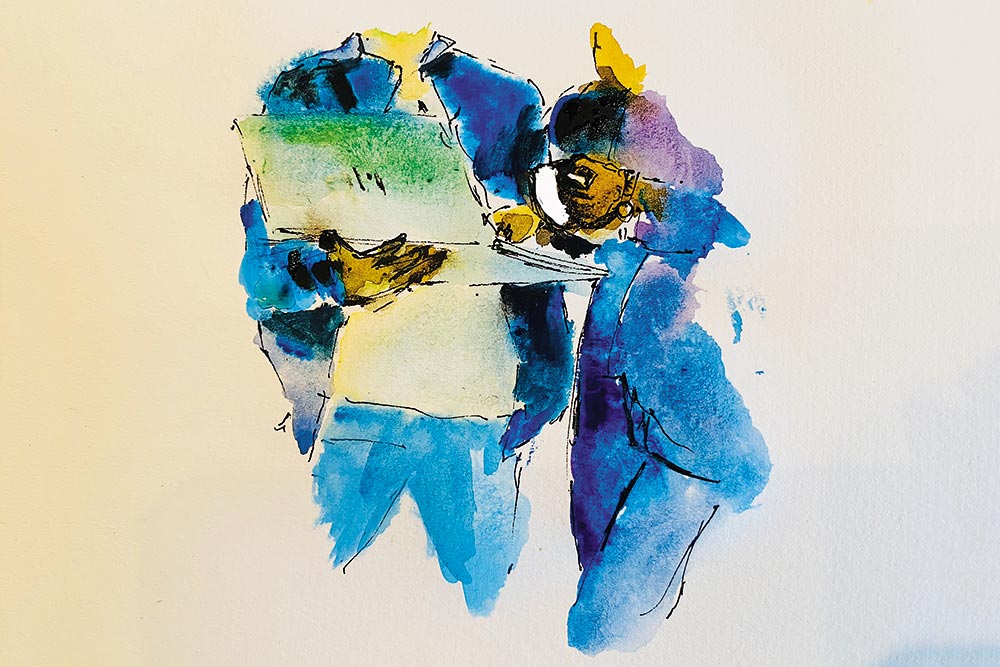Business travel was once a badge of honour. As corporate soldiers, we once used to march around at airport lounges, dressed in our navy and grey suits, holding on to our leather carry-on bags, with a copy of The Financial Times tucked under our arms.
Accumulating reward miles was our favourite game—one in which we would compare miles with other business travellers as if more points denoted that we worked harder than the rest. Red-eyed and constantly on the move somehow justified our existence.
However, a shift has happened in how we look at business travel. It is no surprise that Covid-19 has upended the way we work. It is a given that hybrid work is here to stay. What is uncertain, though, is how the future of business travel will evolve, given several new trends that have surfaced since the pandemic. Undoubtedly, post-pandemic, business travel returned more intensely than most analysts had predicted. However, whether it will reach the same level and intensity as the pre-pandemic years is uncertain.
One primary driver for this expected shift is companies reaping cost savings during 2020–22 because of less travel and realising that work can happen remotely. Take, for example, how teams got structured during the pandemic years. Remote working allowed managers to hire talent away from their usual office space. When structuring a new function, I built a distributed team; its members were recruited from and placed in Modena, Paris, Cairo and Sweden.
Post-pandemic, other managers like me, who had also built a similar global team, felt the need to travel and meet the teams in person. As a result, travel cost started to soar, so much so that it has started to touch pre-pandemic levels. Companies, now used to lower travel costs, are banning non-essential business travel with the argument that not every business travel is justified. However, travelling to meet customers is still justified and usually approved.
While revenue-generating travel is taking priority, internal trips and get-togethers are increasingly being questioned and challenged, because without them things worked fine throughout the pandemic. So why is it necessary now? Benchmarking travel costs with last year, though, is debatable, given the low volume of travel taken in the first half of 2022 when the world was still reeling from the effects of the pandemic.
There is another reason for companies to tighten restrictions on travel spending, which relates to signs of the economy slowing down. Inflation is yet to be restrained, and expectations of a recession remain high. Considering this, businesses have asked employees to restrict high-priced business-class travel. Employers instead ask employees to take a cheaper flight or to fly economy class. Such prudence shown by companies to limit unnecessary travel is justified. Moreover, many companies had added too much staff during the pandemic. Now, to save ballooning cost, there is a focus on reducing it, such as when it is related to business travel.
Are companies alone driving these movements in business travel?
No, the corporate travel soldiers are also becoming change agents for less travel. While interviewing candidates for job roles these days, I am invariably asked about the amount of travel required in the role. I have to craft my answer carefully, given that the appetite to travel has reduced as more and more people, post-pandemic, have begun to realise how much more rest their bodies demand. Travelling long hauls, or multiple times a week—let us be honest—is backbreaking. Gone is the race to boast premium airline memberships and access to first-class lounges. Instead, business travellers are (re)discovering the bliss of sleeping eight hours a night, eating healthy and exercising regularly. No one is too keen to disrupt this newfound equilibrium, and that trend is evident among jobseekers demanding not more than 10% travel per year.
Yet another trend impacting business travel has caught on recently—to cut back on travel to reduce carbon emissions. According to some reports, the air travel-related emissions fell by 80% between 2018 and 2022. Many companies committed to reducing their carbon footprint have started providing carbon emission estimates to their staff when booking their business travellers. It is not an overstatement that, as employees and citizens, we are becoming more aware of our impact on climate, and travel is one of the most significant contributors to carbon emissions. Consequently, conscious travellers are reducing travel and relying more on video calls. When utterly needed, the mode of transportation is also shifting (at least in Europe) towards taking land transport, especially trains.
Where does that leave hotels and airline groups? Well, in an unpredictable soup. Corporate travel is critical to the airline and hotel industries. Keen to recover lost revenues and counter rising inflation, airline tickets and hotel prices have risen significantly, which are the highest in recent decades. Still, according to airlines’ estimates, bookings from corporate customers are less than 70% of pre-pandemic levels. Given the trends discussed above, the forecast for the year does not look good either.
For now, however, leisure travellers are making up for the lost time by coming out in droves after the last few years of lockdown. How long that will last is anyone’s guess. As an investor, I must admit that I am not doubling down on my investments in the hospitality industry.
Nitin Chaudhary is a freelance travel writer and illustrator based in Sweden












 Just one email a week
Just one email a week